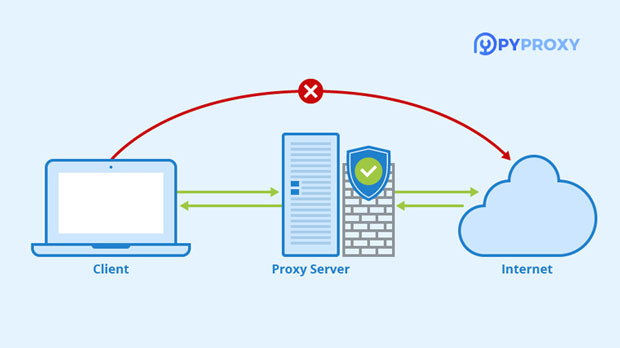Packet loss is one of the key performance indicators for evaluating the reliability and efficiency of a network, especially in wireless environments. In wireless networks, where signal degradation, interference, and congestion can affect data transmission, packet loss can significantly impair user experience. This article delves into the packet loss rates observed in two popular network proxy tools, PYPROXY and Charles Proxy, when operating in wireless environments. The focus is on how these tools handle packet loss, how the loss impacts network performance, and how users can optimize their usage for more stable and efficient network operation. Understanding Packet Loss in Wireless NetworksPacket loss occurs when data packets fail to reach their destination during transmission. This issue can be caused by several factors, such as signal interference, congestion, weak connections, or network instability. Wireless networks, in particular, are more susceptible to packet loss due to environmental factors like physical obstructions, atmospheric conditions, and high network traffic.In the context of network proxies like PyProxy and Charles Proxy, packet loss can influence their ability to monitor, intercept, and manipulate traffic. As proxies sit between a client and the server, they can experience disruptions in data transmission that affect their efficiency. This article will explore how packet loss manifests in these tools when operating in wireless environments and its impact on their functionality.The Role of PyProxy and Charles Proxy in Network AnalysisBoth PyProxy and Charles Proxy are widely used for network monitoring, debugging, and optimization. They act as intermediaries between a client and a server, allowing developers to observe, modify, and troubleshoot network traffic. These tools are critical for debugging web and mobile applications by providing insights into HTTP requests, responses, and the overall network communication process.In wireless networks, where packet loss is more common, these proxies play a vital role in identifying transmission issues and improving the overall network reliability. However, their effectiveness can be significantly affected by packet loss, which can lead to inaccurate data or incomplete traffic analysis. Understanding how these tools behave under such conditions is crucial for anyone using them in a wireless environment.Factors Influencing Packet Loss in Wireless NetworksBefore diving into the specifics of PyProxy and Charles Proxy, it's essential to understand the factors that influence packet loss in wireless networks. These include:1. Signal Strength: A weak wireless signal can lead to packet loss, as the data transmitted may not reach its destination. Wireless networks rely on a clear line of sight, and obstructions like walls or furniture can degrade the signal.2. Interference: Wireless networks are susceptible to interference from other devices, such as microwaves, Bluetooth devices, and even neighboring Wi-Fi networks. This interference can disrupt the transmission of data packets, leading to packet loss.3. Network Congestion: In a congested network, too many devices competing for bandwidth can result in delays and packet loss. This is especially common in crowded environments with many connected devices.4. Environmental Factors: Atmospheric conditions, such as rain or heavy winds, can affect the quality of wireless signals, causing packet loss.PyProxy and Packet Loss: A Closer LookPyProxy, a popular Python-based proxy tool, is commonly used for network traffic interception and modification. When operating in wireless networks, PyProxy's ability to handle packet loss is contingent on its configuration and the quality of the wireless signal.1. Impact of Packet Loss on PyProxy: When PyProxy encounters packet loss, it may fail to capture or modify certain packets, leading to incomplete traffic logs. This can be particularly problematic when debugging complex network issues. Additionally, PyProxy’s performance can degrade if it is unable to establish stable connections due to frequent packet loss.2. Mitigation Techniques: Users can mitigate the impact of packet loss on PyProxy by adjusting buffer sizes, optimizing Wi-Fi connections, and reducing network congestion. Increasing the buffer size allows PyProxy to store and manage more packets, improving its ability to handle network disruptions.3. Real-World Scenarios: In environments with fluctuating wireless signal strength, PyProxy may struggle to maintain a consistent connection to the target server. This could lead to longer delays in packet interception and analysis, hindering real-time debugging.Charles Proxy and Packet Loss: A Closer LookCharles Proxy, a commercial network monitoring tool, is known for its rich feature set and powerful debugging capabilities. However, similar to PyProxy, Charles Proxy’s performance in wireless environments can be negatively impacted by packet loss.1. Impact of Packet Loss on Charles Proxy: Charles Proxy relies on a stable connection to intercept and analyze traffic. When packet loss occurs, Charles Proxy may miss key data packets, leading to incomplete traffic analysis. This could make it difficult to diagnose specific network issues, especially when dealing with complex web applications.2. Optimizing Charles Proxy in Wireless Environments: To optimize Charles Proxy’s performance in wireless networks, users can reduce the number of concurrent connections, prioritize critical traffic, and use higher-frequency Wi-Fi bands (e.g., 5 GHz) to minimize interference. These steps help reduce packet loss and improve the reliability of traffic interception.3. Challenges in Real-World Wireless Networks: In wireless networks with unstable signals or high interference, Charles Proxy’s ability to maintain a connection to the target server may be hindered. This can result in missed or delayed packets, impacting the overall effectiveness of the tool in real-time analysis.Practical Considerations for Optimizing Packet Loss in Wireless NetworksFor users of PyProxy and Charles Proxy, mitigating packet loss in wireless environments is essential to ensure the accuracy and reliability of network traffic analysis. Here are some practical strategies:1. Improving Wireless Network Quality: Ensuring a strong and stable wireless connection is the first step in reducing packet loss. Users should consider upgrading their wireless router, using Wi-Fi extenders, or switching to a more reliable network (e.g., wired Ethernet) if possible.2. Optimizing Proxy Configurations: Both PyProxy and Charles Proxy offer configuration options that can help mitigate packet loss. Adjusting buffer sizes, enabling retries for missed packets, and fine-tuning timeouts can improve the proxies' performance in wireless networks.3. Reducing Network Congestion: Network congestion is a significant contributor to packet loss in wireless environments. Users can minimize congestion by limiting the number of devices connected to the network and ensuring that critical traffic is prioritized.4. Monitoring and Diagnosing Issues: Regularly monitoring network performance and using diagnostic tools can help identify packet loss patterns. Tools like Wireshark and ping tests can provide insights into the extent of packet loss and help users troubleshoot underlying network issues.Packet loss is an inevitable challenge in wireless networks, and its impact on tools like PyProxy and Charles Proxy can hinder effective network analysis and debugging. By understanding the factors that contribute to packet loss and employing strategies to optimize network quality, users can mitigate its effects and improve the reliability of their network proxies. Whether you are using PyProxy or Charles Proxy, it is crucial to ensure a stable connection and fine-tune configurations to handle packet loss effectively in wireless environments.
Sep 18, 2025



































































